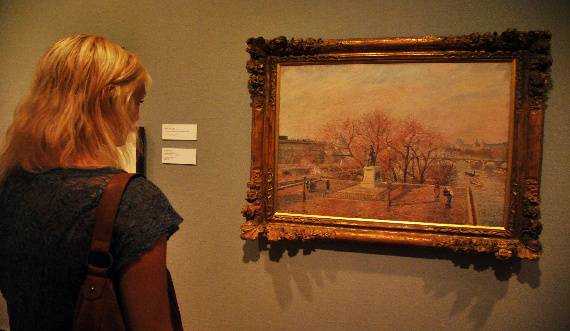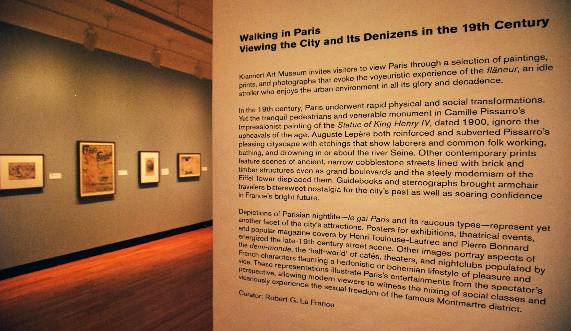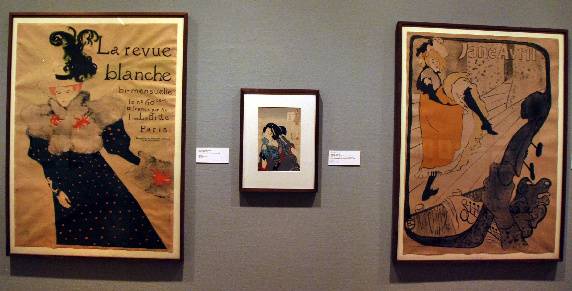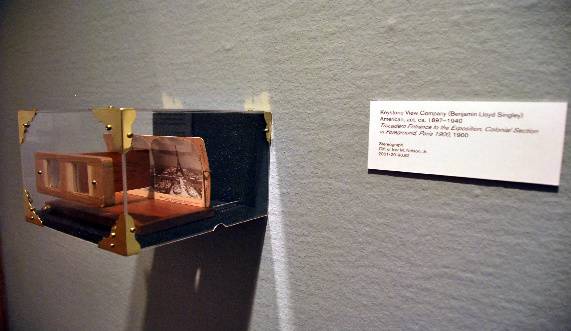
The Walking in Paris exhibition currently at the Krannert Art Museum invites viewers to step out of Champaign-Urbana and into the streets of Paris in the ninteenth century. The images chosen for the show demonstrate the broad range of treasures from this time period that the Krannert Art Museum possesses. Each image carries viewers through what their own experience might be like if they were to walk through the streets of Paris.
The immediate curiosity that strikes a viewer when first entering the exhibit mirrors what the show’s curator Robert La France describes as his feelings of “interest and delight when walking in the streets of Paris,” and through this exhibit he hopes to share this same interest and delight with the public.
The initial draw of the exhibition gallery is the beautiful Impressionist painting of the Statue of Henri VI along the Pont Neuf by Camille Pissarro. On the right, hanging from the ceiling, there is a large, white banner with explanatory text that presents the basic themes and concepts of the show.

When you look to the left of the Pissarro painting there are a series of prints, a nineteenth-century guidebook, and a stereoscopic viewer with photograph of the River Seine and the streets and monuments of the city of Paris. According to La France, this beginning part of the show “allows you to become something of a tourist and armchair traveler, roaming Paris and taking in its sights.”
The side of the room to the right of the Pissarro painting begins with a short label, which starts as an introduction to a specific and famous neighborhood: the Montmartre district, circa 1900. The images immerse you in the district’s bustling nightlife, street advertisements, and suggestions of the illicit cabaret scene.

These first glances of the show give a well laid out, linear view of what walking in Paris may actually be like for those of us who haven’t experienced it in person. La France hopes viewers will “spot several unusual contrasts and comparisons in the show.” He explains that “there is a common and mistaken notion that Impressionist paintings only capture timeless, picturesque, and sunny images of the city and countryside.”
The show rebels against this notion, as the short wall label for the painting suggests a deeper socio-political agenda. Pissarro’s Impressionist painting of a picturesque scene is contrasted with an impressionist styled etching to the right of the painting, which shows someone drowning at the same location.

On the Montmartre side of the room, nineteenth-century poster artists, such as Toulouse- Lautrec and Pierre Bonnardand aid in the exhibition’s contrasts. Images such as Bonnardand’s wine advertisement for French champagne is placed next to a cartoon by Daumier, which uses humor to point out the huge social problem of alcoholism in nineteenth-century France.
These contrasts and the visually appealing images make the aesthetic that La France creates a wonderful experience for viewers visiting the Krannert Art Museum.
The show runs until August 12th and admission is free.
All photos by Sean O’Connor.








